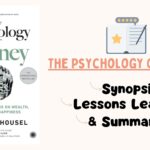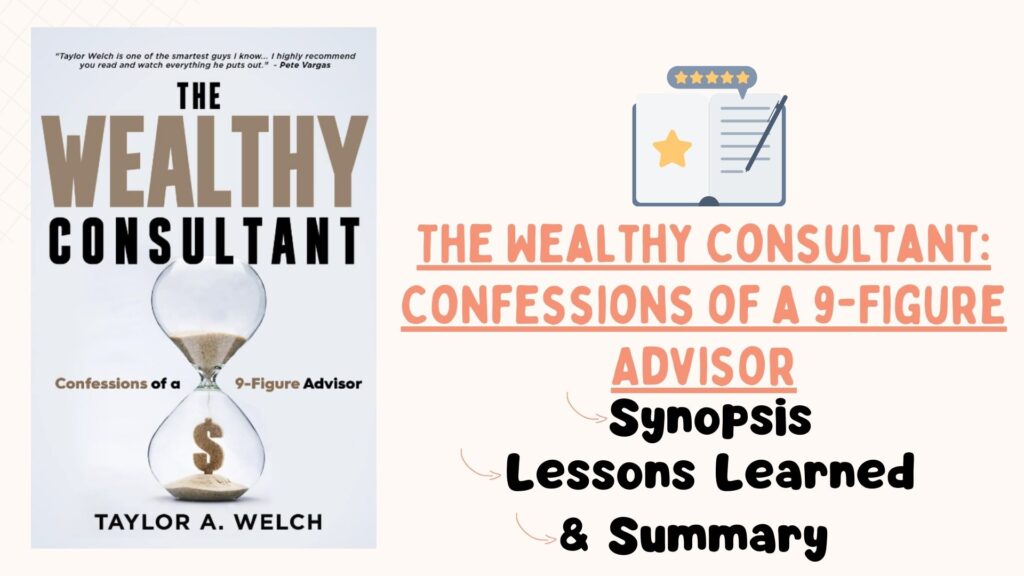Indubitably, the “Little Red Book of Selling” by Jeffrey Gitomer is a must-read for anyone looking to master the art of sales. In this blog post, we will provide a comprehensive summary of the book’s 5 principles of sales greatness and highlight the key takeaways that can elevate your sales game. With the author’s proven strategies and practical tips, this book is a valuable resource for both seasoned sales professionals and beginners looking to sharpen their skills.
Key Takeaways:
- Relationships are key: Building strong and genuine relationships with customers is the foundation of successful selling.
- Value over price: Emphasizing the value of your product or service rather than focusing solely on price is crucial in closing sales.
- Be a problem-solver: Understanding the customer’s needs and offering solutions demonstrates empathy and builds trust.
- Persistence pays off: Consistent follow-ups and perseverance are essential to overcome objections and close the deal.
- Continuous learning: Sales professionals should always be seeking to improve their skills and knowledge in order to stay ahead in the industry.
For purpose of IP protection i will not state the exact titles and i will change the word for word written title.
Principle #1) Kick your own ass
Alright, let’s keep it real. Selling isn’t a walk in the park; it’s tough and gritty, and there’s no magic bullet. On days when customers aren’t exactly breaking down your door, it’s on you to show them what they’re missing out on. Light that fire within, challenge yourself daily, because nobody else will do it for you. And just like a cowboy learning the ropes, you’ve got to dust yourself off and get back in the game after every tumble. It’s all about keeping that hustle strong, always learning, always hungry. You’ve got to throw yourself into the thick of it, whether it’s by hitting the books, tearing through a new course, or fine-tuning that pitch until it shines. Stay sharp, stay eager, and never stop growing. That’s the spirit of a sales champ.
Principle #2) Prepare to Win
It’s all about stepping into the arena with the mindset of a champ. Every sale is a competition, and if you’re not in it to win it, you might as well hand the trophy to someone else. Gear up, strategize, and go for gold.
Principle #3) Personal Branding
Remember, in the world of sales, your brand is your promise. It’s not about who you know anymore, it’s about who knows you, who trusts you. Make your name synonymous with value, and the game changes in your favor.
Principle #4) Value and Relationships over Price
Price is just a number, but value? That’s the real deal. Build relationships that matter, and your customers will see the worth beyond the price tag. It’s about making them feel like they’ve hit the jackpot with what you’re offering.
As a salesman you can’t focus on price, you need to focus on value!
Principle #5) Network is Your Net Worth
Roll up those sleeves because the real work is networking. Every handshake, every conversation is a seed planted for success. Your next big deal is hidden in that web of connections, so weave it strong.
Think of it this way: principle #5 emphasizes the immense value of networking in sales. The key here is to understand that every interaction is an opportunity to plant seeds for future success. Networking isn’t just about immediate sales; it’s about building a network of potential clients and referrals. When you meet someone who isn’t ready to buy right away, it doesn’t spell the end. Instead, it’s an opening to establish a relationship that could lead to sales down the line.
By getting to know people, understanding their needs, and keeping in touch, you become their go-to person when they’re ready to buy. This approach is the antithesis of being overly “salesy.” It’s about nurturing relationships, not pushing for a sale at every turn. When you focus on genuine connections, you create a network of potential customers who trust and think of you when the need arises. This strategy turns short-term interactions into long-term assets, making your network a vital component of your net worth in sales.
Just because someone isn’t ready to buy immediately doesn’t mean they won’t consider a purchase in the future. Building a relationship with potential customers offers them a chance to reach out when they’re ready. Avoiding a hard sell and focusing on understanding their needs fosters trust. This approach ensures they remember you as a resource when the time is right for them.
Principle #6) Get to the Decision Maker
If you’re not talking to the head honcho, you’re shadowboxing. Find your way to the person calling the shots or you’re just spinning your wheels.
Principle #7) Engagement Leads to Ownership
Get the customer involved, and they’ll sell themselves. It’s about lighting that spark of ‘I need this’ in their eyes.
One of the most effective ways to nudge a customer toward a purchase is by letting them engage directly with the product. Think of it as a test drive for a car. When customers get hands-on, they create a personal connection with the product. This interaction allows them to visualize the product in their life, understand its functionality, and appreciate its value. It’s a sensory experience that often speaks louder than the most eloquent sales pitch. Customers can see, feel, and understand the product, making it more than just an item—it becomes a solution to their needs or a fulfillment of their desires.
Moreover, this engagement can sometimes make the product sell itself. For example, a customer trying out a high-quality kitchen knife immediately feels the ease of slicing and the comfort of the handle, which can be far more convincing than just hearing about these features. This approach removes doubts and builds trust in the product’s performance. It also encourages a sense of ownership, as customers can already imagine the product as part of their daily lives. By reducing the abstract nature of a sales pitch to a tangible experience, we significantly increase the chances of converting interest into a sale.
Principle #8) Humor Sells
If you can get a chuckle, you’re halfway to a signature. People buy from people they like, and everyone likes someone who can make them laugh.
Principle #9) Creativity is King
Stand out from the crowd. Paint your pitch in colors so bright they can’t look away. It’s not just what you’re selling, but how you’re selling it.
Principle #10) Risk Reduction
Make it as easy as pie to say yes. Take the risk out of the equation, and you turn skeptics into believers.
In the world of sales, reducing the risk for your customer is a game-changer. Imagine this: you’re eyeing a new tech gadget, but what if it doesn’t work as advertised? That’s where risk reduction steps in. It’s about giving your customers a safety net – maybe it’s a money-back guarantee, a free trial period, or a rock-solid warranty. This strategy is about building trust. When customers feel secure in their purchase, they’re more likely to take the leap. It’s like giving them a parachute for their leap of faith. The bottom line? Lower their risk, and you’ll open the door to more sales. It’s not just about making a sale; it’s about creating a relationship of trust and confidence.
There’s a deep psychological aspect at play when it comes to trust in the sales process. When a customer trusts you, their confidence in both the product and their decision to buy goes up. This is because trust reduces fear and uncertainty. It’s human nature to seek safety and assurance, especially in purchasing decisions. When customers feel confident, their worries and doubts diminish, paving the way for a more straightforward decision-making process. Essentially, trust acts like a psychological safety net, making customers more comfortable and inclined to commit to the purchase. It’s not just about the product’s features or price; it’s about creating a sense of security and reliability around it.
Principle #11) Proof Over Bragging
Show, don’t tell. If you’re the only one singing your praises, it’s a solo act. But when referrals chime in, it’s a choir of credibility.
Principle #12) Stay Alert
Keep those antennas up and tune into the signals around you. Opportunities whisper before they shout, so listen closely.
Principle #12.5)
Taking a step back from the throne of the universe is about humility in sales. No matter how stellar your sales record may be, it’s vital to remember that you don’t have all the answers. Presuming that you do is the fastest route to alienating your customers and colleagues. It’s about grounding yourself, recognizing that being a part of the team, not above it, fosters the best results. Focus on your role, continue to learn from others, and remember that sales is a collective effort. Let go of the need to control everything and instead, invest that energy into honing your sales craft.
As a salesperson, having a singleness of purpose means that your primary, unwavering goal is to sell. It’s about channeling all your energy and focus into understanding your clients’ needs and how your product or service can meet them. This laser focus enables you to navigate through distractions and remain steadfast on the end goal: closing the sale. It’s about being purpose-driven in every interaction, ensuring that each action you take is a step toward securing that agreement. In essence, this concentrated effort not only drives sales success but also builds a reputation for being dedicated and result-oriented in the field.
Alright, let’s break it down. “Sales cures all” is kind of like saying a good offense is the best defense in sports. When you’re knocking it out of the park with your sales, you’re not just bringing in the dough, you’re actually fixing problems left and right without even realizing it. It’s like this: imagine your sales are booming – that means cash in the bank, right? And when you’ve got the cash, you can sort out a lot of headaches. Need to upgrade your tech? Done. Want to expand? You got it. It’s like having a Swiss Army knife in your pocket; whatever the issue, you’re ready to tackle it. So, in a nutshell, keep selling, keep solving.
Principle 1: The Power of Belief
Some of the most successful salespeople attribute their achievements to the power of belief. In “Little Red Book of Selling: 5 Principles of Sales Greatness,” author Jeffrey Gitomer emphasizes the significance of belief in the sales process. He highlights how belief in oneself, the product, and the value it brings can significantly impact an individual’s selling capabilities.
Believing in Your Product
On one hand, belief in the product is crucial for sales professionals. When salespeople genuinely believe in the product they are offering, it shines through in their interactions with potential customers. This belief creates an air of authenticity and conviction, which can be incredibly persuasive.
On the other hand, selling a product without a strong belief in its value can come across as insincere and undermine the trust between the salesperson and the customer. Gitomer stresses the importance of thoroughly understanding and believing in the product’s ability to address the customer’s needs and provide value.
Building Confidence in Sales
With sales being a high-pressure profession, confidence plays a fundamental role. A salesperson who exudes confidence naturally instills trust in potential customers. Gitomer underlines the significance of building confidence not only in the product but also in oneself as a sales professional.
Confidence allows salespeople to communicate their message with authority, handle objections effectively, and navigate through challenging sales situations. Building confidence takes time and effort, but it is an indispensable characteristic in the world of sales.
Principle 2: Creating Value
One of the key principles in the “Little Red Book of Selling” is the focus on creating value for customers. In today’s competitive marketplace, sales professionals must go beyond simply pitching a product or service and instead, demonstrate how it can add value to the customer’s life or business. This principle emphasizes the importance of understanding the customer’s needs and providing solutions that offer tangible benefits.
What is Value?
The concept of value in sales is multi-faceted. It encompasses not just the price of the product, but also the utility, quality, and overall benefit it provides to the customer. The true value of a product lies in its ability to address a specific pain point or fulfill a need for the customer, ultimately improving their situation in some way.
Techniques for Elevating Product Value
One technique for elevating product value is to highlight the unique features and benefits that set the product apart from competitors. Another approach is to provide real-life examples or case studies that demonstrate how the product has positively impacted other customers. By showcasing the value in this way, sales professionals can effectively differentiate their offering and justify its price point.
Any sales professional can incorporate these techniques into their sales strategy to elevate product value and resonate with customers on a deeper level. By emphasizing the tangible benefits and unique qualities of a product, it becomes easier to justify the price and demonstrate why it is worth the investment.
Principle 3: Selling Yourself
Despite the plethora of sales techniques and strategies, one fundamental principle remains constant: the importance of selling yourself. In the world of sales, the way you present yourself, your personal brand, and the trust and rapport you establish are crucial components of building successful relationships with clients.
The Role of Personal Branding in Sales
Personal branding plays a significant role in the sales process. It’s how you present yourself to the world and how you want to be perceived by others. Your personal brand should reflect your values, expertise, and unique selling proposition. In sales, clients are not just buying a product or service; they are also buying you and your brand. Personal branding allows you to differentiate yourself from the competition and build credibility with potential clients.
Establishing Trust and Rapport
Yourself as a salesperson are integral to establishing trust and rapport with clients. Building trust involves being authentic, transparent, and consistently delivering on your promises. Rapport is about creating a connection with your clients, understanding their needs, and showing genuine interest in helping them solve their problems. Yourself and how you present yourself directly impact your ability to build and maintain strong relationships with clients.
Branding with clients is a continuous process that requires dedication and mindfulness. It’s about consistently portraying yourself in a way that aligns with your personal brand and builds trust and rapport with clients. By focusing on personal branding and establishing trust and rapport, you can elevate your sales game and create lasting, mutually beneficial relationships with clients.
Principle 4: Understanding the Buyer’s Mindset
Keep in mind that successful sales depend on a deep understanding of the buyer’s mindset. To achieve sales greatness, it is crucial to comprehend what motivates and drives the buyer to make a purchase. By grasping the psychology of the buyer, sales professionals can tailor their approach to effectively meet the buyer’s needs and desires.
Identifying Buyer’s Needs and Desires
Principle: Identifying and fulfilling buyer’s needs and desires is at the core of successful sales. By asking the right questions and actively listening to the buyer, sales professionals can uncover the buyer’s pain points, motivations, and desired outcomes. This insight allows the salesperson to position their product or service as the solution to the buyer’s specific needs, making the sales process more targeted and effective.
Strategies for Effective Communication
With the understanding of the buyer’s mindset, sales professionals can tailor their communication to resonate with the buyer. Using language and messaging that directly addresses the buyer’s motivations and concerns can create a strong emotional connection and build trust. Additionally, adapting communication styles to match the buyer’s preferences, whether they are analytical, expressive, amiable, or driver personality types, can improve rapport and understanding.
Plus, employing active listening and empathy in communication can further enhance the sales professional’s ability to understand and connect with the buyer, ultimately leading to more successful sales outcomes. Taking a genuine interest in the buyer’s perspective and engaging in meaningful dialogue can set the stage for long-term, fruitful relationships.
Principle 5: The Art of Closing
Closing is the critical point in the sales process where all the hard work comes together. It’s the moment when the prospect makes the decision to buy, and it’s the salesperson’s responsibility to guide them to that decision. The art of closing involves understanding the psychology of buying, knowing how to handle objections, and being able to create a sense of urgency without being pushy.
Preparing for Various Closing Scenarios
Closing a sale can take many different forms, and it’s important for sales professionals to be prepared for any scenario. Whether it’s a trial close, an assumptive close, or a straightforward ask for the business, understanding the nuances of each approach is crucial. Being adaptable and quick on your feet will help you navigate the varied closing situations you may encounter, and increase your chances of success.
The Importance of Follow-Up
Closing the sale is just the beginning; following up with customers is essential for building long-term relationships and generating repeat business. Follow-up shows the customer that you care about their satisfaction and are committed to providing ongoing support. It’s an opportunity to address any concerns, answer questions, and reinforce the value of the purchase, ultimately building trust and loyalty with the customer.
FollowUp It’s important to note that consistent and timely follow-up can make all the difference in securing a sale and maintaining a strong client base. Neglecting this crucial step could result in missed opportunities and a negative impact on your sales performance.
Conclusion
Summing up, “Little Red Book of Selling: 5 Principles of Sales Greatness” provides invaluable insights and principles that are essential for achieving sales success. The book outlines key principles such as building relationships, asking the right questions, and creating value for customers. Understanding and implementing these principles can significantly enhance a sales professional’s effectiveness and ultimately lead to greater success in the field of sales. By incorporating the strategies and tactics outlined in the book, sales professionals can improve their approach and achieve outstanding results in their sales endeavors.
FAQ
Q: What is “Little Red Book of Selling: 5 Principles of Sales Greatness” about?
A: “Little Red Book of Selling: 5 Principles of Sales Greatness” is a book by Jeffrey Gitomer that focuses on five essential principles for achieving sales greatness. These principles encompass the fundamental aspects of successful selling and provide valuable insights for sales professionals.
Q: What are the five principles mentioned in the book?
A: The five principles outlined in the book are: 1) Kick Your Own Butt, 2) Prepare to Win, 3) Personal Branding, 4) Acquire and Keep Customers, and 5) The Lifetime Value of Your Customer. These principles form the core framework for achieving success in sales.
Q: How can the principles of the book be applied in real-world sales scenarios?
A: The principles in the book provide actionable strategies and techniques that can be implemented in real-world sales situations. From self-motivation and preparation to building a strong personal brand and nurturing customer relationships, the book offers practical guidance for applying these principles effectively.
Q: What are the key takeaways from “Little Red Book of Selling: 5 Principles of Sales Greatness”?
A: Key takeaways from the book include the importance of self-discipline and continuous improvement, the value of creating a strong personal brand, the significance of customer acquisition and retention, and the understanding of the long-term value of customers in driving sales success.
Q: Who would benefit from reading “Little Red Book of Selling: 5 Principles of Sales Greatness”?
A: Sales professionals, entrepreneurs, business owners, and anyone involved in sales or customer-oriented roles can benefit from reading this book. The principles and insights shared are applicable across various industries and can help individuals enhance their sales abilities and achieve greater success.












